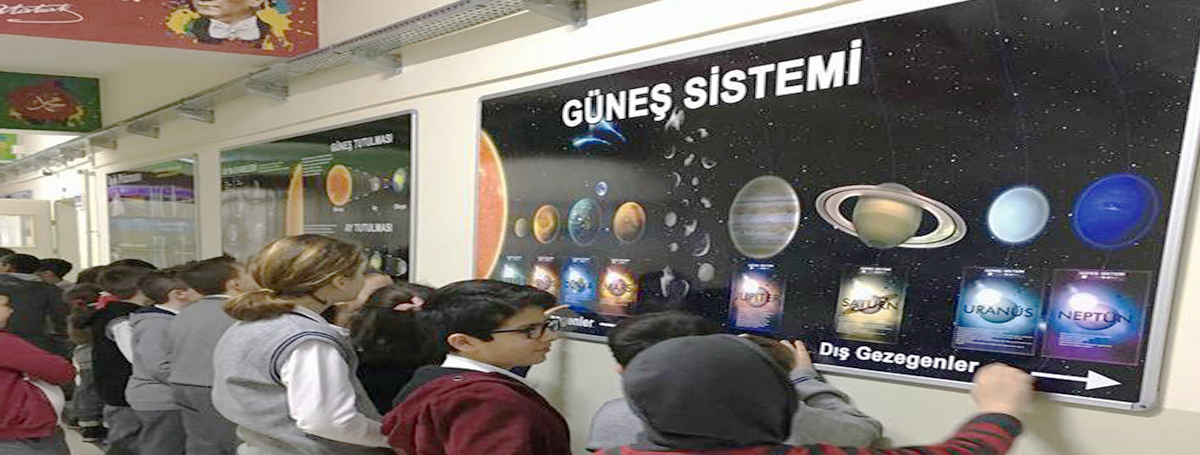
Throughout the Ottoman Empire, a crucial objective of education was to raise 'great Muslims'. Therefore there was a requirement for Islamic scholars, which was sustained through Islamic Faith Schools, called Madrasa.In 1913, the Medresetü-l Eimmeti vel Hutaba (School of ministers and preachers Medresetü-l Vaazin were combined to form the tangible origins these days's Imam Hatip high schools
In 1924, the Tevhid-i Tedrisat (Law of Marriage of Educational Instruction was passed, replacing the existing, primarily sectarian instructional system with a secular, centralist and nationalist education one. The brand-new law brought all educational institutions under the control of the Ministry of National Education. A Faculty of Theology at the Darülfünun (Istanbul University), special schools for training imams and hatips (ministers and preachers) were opened by the new Ministry of National Education. However, in 1930 İmam Hatip schools were closed and 1933 the Faculty of Divinity was abolished.
In contrast to the solely secularist nature of the education policy of the Republican politician Individuals's Celebration (CHP) spiritual education was renewed in 1948. This included the establishment of a Faculty of Theology at the University of Ankara in 1949. Primary steps for the establishment of Imam Hatip schools started in 1951 under the Democrat Celebration government, which set up seven special secondary schools (Imam Hatip Okulları). In addition, in 1959 Islamic Institutes were opened for graduates of Imam Hatip schools.
Following the coup d'etat in 1960, Imam Hatip schools encountered the threat of closure. Following the return to civilian politics and the intro of the brand-new constitution in 1961, graduates of Imam Hatip schools might only enrol in university programs if they had actually passed courses provided at secular schools. Throughout the premiership of Süleyman Demirel however, graduates of Imam Hatip schools were admitted to university without such requirements. The 1971 Turkish coup d'état presented 2 essential reforms: firstly junior high Imam Hatip schools were abolished, and in 1973 Imam Hatip schools were relabelled as Imam Hatip high schools. Under the subsequent National Education Basic Law, Imam Hatip schools were specified as employment schools, where students were to be trained as preachers and ministers or gotten ready for college.
Imam Hatip schools grew slowly at first, however their numbers expanded rapidly to 334 throughout the 1970s. The coalition government of 1974, developed by the CHP and the MSP (National Salvation Celebration), dedicated to reopen junior highs and providing the right of entry to university through examination. 230 new Imam Hatip high schools were opened in a period of almost four years. Throughout the 1974-75 school year the number of trainees addressing the Imam Hatip high schools grew to 48,895. This number consequently grew to 200,300 by 1980-81. In addition, females got the right of entry to Imam Hatip high schools in 1976. The proliferation of Imam Hatip high schools is typically mentioned as the result of the National Salvation Celebration's membership of a variety of coalitions with Nationalist Front federal governments.
Situation given that 1980
The coup d'etat of September 12, 1980 is a crucial turning point in the history of Turkey and likewise for the history of Ä°mam-Hatip high schools. Under military governance, graduates of Imam Hatip high schools gained the right of entry to all university departments. In 1985, 2 new Imam Hatip high schools opened, one in Tunceli, despite of the so-called ethnic structure of the region, and the other in Beykoz as an Anatolian Imam Hatip High School, with the goal of contributing to the education of kids of households who work abroad. Although the number of Imam Hatip high schools had actually not increased since, the number of trainees participating in Imam Hatip high schools has increased by 45%. This is partially due to the enhancement in the quality of Imam Hatip high schools and the education offered at such schools.
During the education year of 1973-74, the overall variety of Imam Hatip students was 34,570; in 1997 this number had dramatically increased to reach 511,502. Along with this massive increase in popularity, the variety of schools likewise increased. The number of Imam Hatip junior high schools reached 601 and secondary schools 402. The boost in both trainee and school numbers can be attributed to factors including the commitment of individuals to faith, dorm room centers, scholarships, the admittance of females and an increase in demand for religious education.
Research suggests that between the years of 1993 and 2000, prospective students signed up at Imam Hatip high schools mainly to get spiritual tutoring along with a more basic education.In addition, research study reveals enrolment at Imam Hatip high schools was based exclusively on the trainee's choice. The 3rd suggested consider the increase in popularity of Imam Hatip schools is the admission of female trainees in 1976. By 1998, almost 100,000 females went to Imam Hatip high schools, comprising nearly half of all students. This fact is especially revealing since ladies are not qualified to end up being either priests or ministers.
However, the introduction of eight click here years of compulsory education in 1997 has seen a sudden decrease in the popularity of Imam Hatip schools. In 1999, the reclassification of Imam Hatip schools as "trade schools" meant that, although more choices had been offered to graduates, obtaining locations at distinguished university courses became more difficult.By needing that all 8 obligatory years of schooling be invested under the very same primary-school roof, middle schools were eliminated. Children might not enter professional schools (one of them the Imam Hatip school) until the ninth grade (instead of the sixth, as prior to).